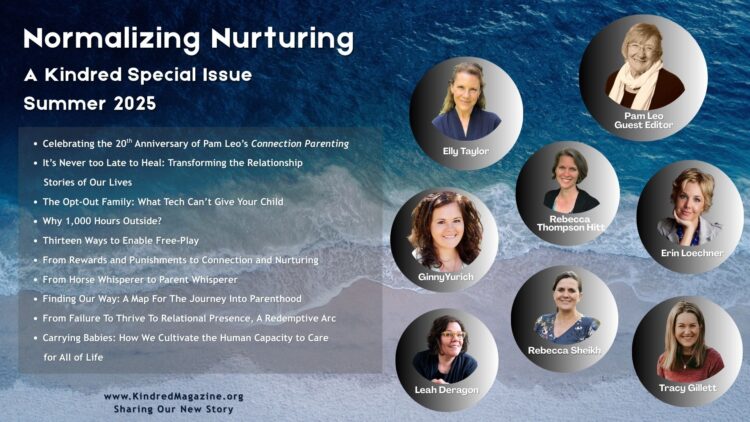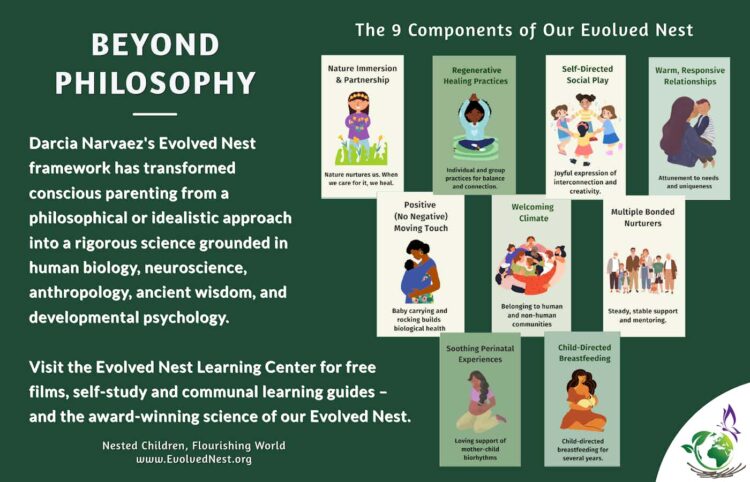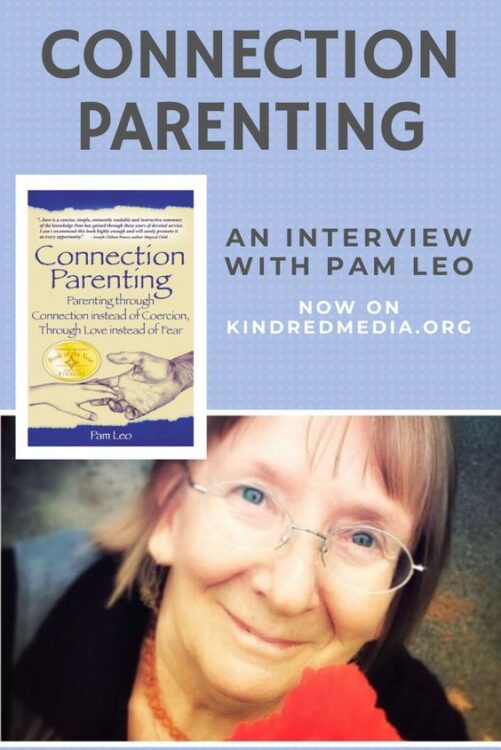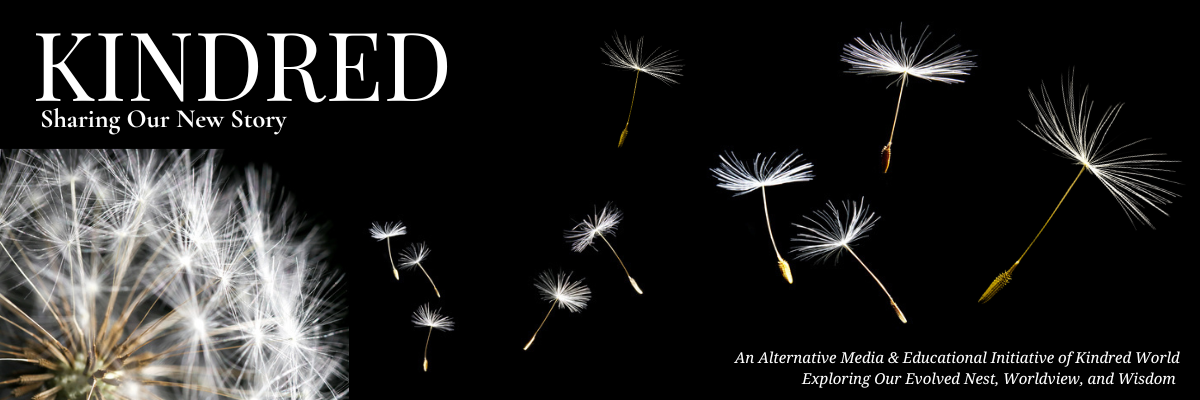“Why do some children grow up to become a Gandhi and others a Hitler? What happens from birth to adulthood that determines that difference?” – Pam Leo
“The single most important child rearing practice to be adopted for the development of emotional and social healthy infants and children is to carry the newborn/infant on the body of the mother/caretaker all day long…” – James Prescott, Ph.D.
Part One: We Discover Baby Wearing Benefits

Every mother who has ever had a baby shower has probably heard someone say, “I wish they had made something like that when I had my babies.” For some reason, it always annoyed me to hear that and I vowed I would never say that to any expectant mother about any new baby gadget. I kept my vow until my first grandchild was born. By then I had done so much research on the importance of carrying babies and the benefits of keeping them in close physical contact, I knew we had to have a sling to carry this baby. I wanted my grandchild to have the holding my own children didn’t get enough of, because I was taught to believe it would spoil them.
I ordered “The New Native” baby carrier from an ad in Mothering. Since we all lived together, I had lots of opportunities to see my daughter “wearing” my granddaughter, and I had lots of opportunity to wear her myself. I was able to learn first-hand what I had read about “babywearing”. She nursed in her sling, and she napped in her sling. She was totally content and I still had both hands free to do whatever I needed to do.
What a win-win: happy baby, happy caregiver. Unless she was hungry and only nursing could meet her need, carrying her in the sling would always make her happy, whether it was Mom or Dad or Grandma doing the carrying. Wearing your baby in a sling completely transforms the experience of parenting an infant.
Now slings could hardly be called “new baby gadgets,” since they have been used in many other cultures around the world for thousands of years. However, in North America, they were something new 20 years ago at my daughter’s baby shower. Whenever one of us was wearing my granddaughter in a public place, people would always stop to ask us about the sling and marvel at this great “new” way of carrying babies.
Babies want and need to be “in arms” and they let us know that. A baby crying in a stroller usually becomes content as soon as he or she is picked up and held. I often see parents carrying a baby in one arm and struggling to push an empty stroller with the other!

Contrary to what we have been taught to believe, research shows that babies who are held and carried all the time and get their need for touch well-met in their first year do not become clingy and overly dependent. They cry much less and they grow to become happier, more intelligent, more independent, more loving and more social than babies who spend much of their infancy in infant seats, swings, cribs, and all the other plastic baby-holding gadgets that don’t provide babies with human contact. We had all those baby-holders for my granddaughter and she spent a little time in all of them, but she spent most of her infancy in her sling because she was happiest there, and we loved carrying her and being close to her.
Our non-negotiable neurobiological need for “Positive, Moving Touch” is one of our nine Evolved Nest components, according to the award-winning science of Darcia Narvaez. You can read about the Evolved Nest here on Kindred, and visit the Evolved Nest Learning Center’s section on Positive, Moving Touch here.
Many new parents buy a sling or receive one as a gift and end up not using it because they can’t figure out how to get themselves and the baby comfortable. I’ve heard parents say they tried a sling once, but the baby didn’t like it so they just never used it again. In other cultures, parents naturally know how to use slings, because as children they grew up seeing slings used, and wearing their siblings in slings. Since slings are new to our culture, anyone just being introduced to using a sling will usually need someone to show them how to get themselves and the baby comfortable. Since I am passionate about the use of baby slings – based on both my research and my personal experience – I often demonstrate the use of slings in my parenting classes. Parents are thrilled when they learn how comfortable and convenient it can be to meet their baby’s needs and still do all the other things they need to do.
Slings are different than front carriers. A sling is like a hammock. From newborn to the sitting-up stage, babies’ spines are best supported in slings because their weight is distributed along the length of the spine. Front carriers that hold the infant upright with their legs hanging down, can stress the spine because they put all the baby’s weight at the base of the spine.
There are many styles and brands of slings. While “The New Native Baby Carrier” is my personal favorite, the best sling is the one you are most comfortable wearing. It is helpful to try several and have someone who is comfortable using each one show you how to use it. If you aren’t comfortable, your baby won’t be either. The two most important things I tell parents about using a sling are: 1) if the baby’s bottom is below your belly button, the sling is too low and your back will hurt; 2) each time you put the baby in the sling, you will need to walk around until the baby settles in. Babies like and need movement.
When we wear/carry a baby, we are providing more than the comfort of the sound of our heartbeat and voice and the touch and warmth of our body. According to research by James Prescott, a developmental neuropsychologist and cross-cultural psychologist, “vestibular-cerebellar stimulation (which happens when we carry our babies) is the most important sensory system for the development of “basic trust” in the affectional bonding between mother and infant. It establishes the biological and psychological foundations for all other human relationships.”
We have learned that carrying infants is a vital part of nature’s biological plan for mother-infant bonding, and that it is critical to the development of trust, empathy, compassion and conscience. Carrying or wearing an infant in a sling, keeping the infant in constant human contact, and breast feeding on demand are the biological design for optimal physical, intellectual and emotional human development. Research confirms that carrying human infants develops their intelligence and their capacity for trust, affection, intimacy, and love and happiness. Anthropologist Ashley Montagu refers to this (second-nine-months) carrying stage, or “in arms” period, as the “external gestation period” [exterogestation] that the infant needs to complete his/her development. There is even a brand of sling called “Womb with A View.”

Recently when I was demonstrating the use of a sling in a parenting workshop, one of the fathers shared the following story: On one of his trips to the island of Haiti, a very distraught father came to the hospital carrying a newborn whose mother had died in childbirth. The father’s biggest concern was “who will carry this baby”. It is unlikely that this baby’s father had read the scientific research on the importance of carrying babies. Yet he knew it was what his baby needed most. The father in my workshop told of his amazement at seeing many children there who had barely enough to eat, few clothes, no shoes, no toys, and yet were some of the happiest children he had ever seen. As babies these children were carried all day long as part of the natural and loving parenting practiced in their culture.
For decades, we have been taught to believe that holding babies too much “spoils” them, even though in much of the rest of the world, babies are and always have been carried or worn in a sling all day until they could walk. In cross-cultural studies of child rearing practices, James Prescott found that the countries that are the least violent are the countries where babies are constantly carried or worn on the body of the mother/caregiver. The United States has the highest rate of crime and violence in the world and it has the lowest number of constantly carried babies in the world. Is there a connection here?
Meeting our infant’s biological need for human contact is not about following a particular parenting philosophy. It is about honoring and adhering to nature’s biological plan for optimum human development. Keeping our infants in almost constant human contact for nine to twelve months may sound like an impossible goal in modern society. Sleeping with our infants provides that contact at night. Holding them or wearing them in a sling will give them more of the human contact they need. Now that research has shown that holding babies does not “spoil” them, but is, in fact, what they need most, we would be wise to listen to our hearts and “hold that baby all the time.”

Part Two: 28 Years Later…
Fast forward 28 years and the granddaughter who was being carried at the writing of this article is now a mother carrying her own first baby. Thus, the reigniting of my passion for sharing the importance of babywearing. Parents and caregivers meeting babies’ need for connection through the practice of babywearing has been the norm in other cultures worldwide throughout human history.
In 1975, Jean Liedloff wrote the Continuum Concept, the most important book about carrying babies that had ever been written. Now, 50 years later, it is still the most important book parents can read to truly understand why babywearing matters so much.] In western culture we have made some progress but it is still far from being the norm. Despite decades of well-documented evidence of the wellness benefits to babies, parents and caregivers, we still see more babies in strollers and other plastic baby holders, than being carried or worn.
Why would the human infant be the only mammal unable to walk at birth unless their neurobiology demanded the nurturing of being carried until they can walk? Responding to a baby’s biological need for connection means keeping them in close physical contact by carrying them. Connection Parenting is not a parenting philosophy. We don’t get to have a parenting philosophy. Human infants have a nonnegotiable, neurobiological need for connection to thrive. Babies can survive without their biological need for connection being met by close physical contact and being carried, but they cannot thrive. We now know that carrying and wearing babies also grows their capacity to care about others and the planet.

My north star for Connection Parenting is to always ask this question: “How can I respond to this child in a way that preserves connection?” Given the lack of significant gains in the normalizing of nurturing babies through babywearing in western culture, I am, once again, joining the growing choir of babywearing advocates, but not as an advocate, as an activist. At nearly 75, I have the obligation of an elder to pass on the ancient wisdom of babywearing by sharing both the truth and the proof of human babies’ nonnegotiable, neurobiological need to be carried.
In addition to my passion for promoting parenting practices that nurture optimal human development, I am in a unique position to use all my platforms as the author of Connection Parenting, the founder and director of the early literacy nonprofit, Book Fairy Pantry Project, a former family child care provider, and early childhood educator trainer, to actively demonstrate and promote the wellness informed practice of babywearing.
By wearing my baby “doll” in a sling and a button that says, “Ask Me About Babywearing” to every talk, class, or public event I do, I can demonstrate and talk to parents and caregivers about wearing their babies a minimum of one hour a day. When parents and caregivers have the information and support they need to know how to wear their babies, and they commit to wearing the baby a minimum of one hour a day, their biological nurturing instinct will be activated and carrying and wearing their baby will become their parenting/caregiving norm.
I was encouraged to read that, “In 2023 more [North] American parents than ever before embraced the practice of baby-wearing, recognizing its benefits for both parent-child relationships and daily convenience.” – Moderneyernity.com
Even more encouraging is the hard science we now have, thanks to the work of Darcia Narvaez, PhD snd G.A Bradshaw, PhD in their 2023 book, The Evolved Nest. At last, the need for connection, through the close the physical contact of being carried, observed by parents worldwide, throughout human history, has been sanctioned by science.
“Human connections create the neural connections…” – Daniel Siegel

For parents who didn’t know, or didn’t have enough resources and support, and therefor missed the opportunity for babywearing with their now older children, the opportunity for meeting their need for close connection is not lost. The best remediation for missing connection that I know is loving touch. Giving young-ones massage, back rubs, piggybacks, and joyful roughhousing can provide the physical contact to strengthen your parent-child connection when they are no longer babies.
In the words of western culture, babywearing pioneer, Barbara Wishingrad, founder of Nurturing Across Cultures (formerly The Rebozo Way Project):
“This nurturing way of parenting is the way many cultures have been successfully parenting for years, and its comeback in the western world shows that the concept is needed, relevant, and here to stay. So, let’s use it, talk about it, and teach it! And in this way, we can all be part of a better tomorrow for ourselves as well as our children.”
“By carrying babies, we cultivate their capacity to care… for all their relations…including Mother Earth.” – Pam Leo
Resources
Learn more about why Positive, Moving Touch is one of the nine components of our Evolved Nest.
How to Respect a Baby Through Positive Touch
Baby Care: 3 Rs for Raising a Happy Child
Simple Ways to Calm a Crying Baby
Why You Should Wear (or Carry) Your Baby (At Least Some of the Time)

